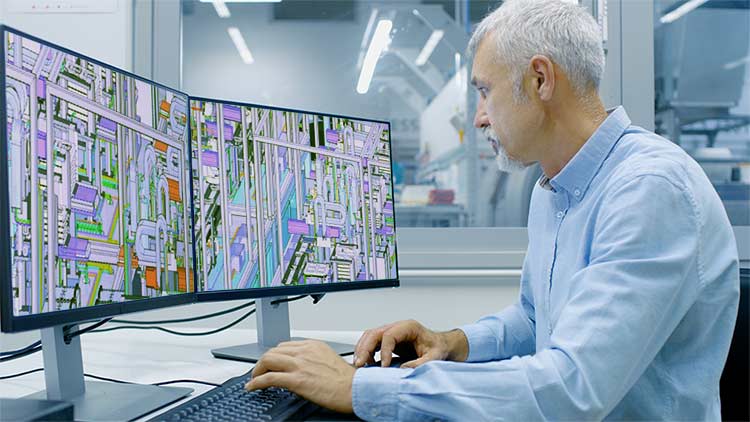Is it your dream to use a single design program from conceptual design to delivery?
Simpler Workflow. More Productive.
If a designer wants to be efficient, they select different tools for conceptual design, detailed design, cabling and routing, simulation, and design verification. But what if you could do all of these tasks in a single software application?
Not too long ago, I spoke with an engineer designing production lines. Most of his projects begin with a new design. It’s the nature of his work.
He faces the same challenges as anyone designing production lines. He needs to be nimble and flexible in the conceptual design phase. During conceptual design (CD), he doesn’t want his design environment to slow him down. During detailed design (DD), he needs an environment capable of managing huge amounts of information efficiently.
His solution? Use different programs for conceptual design and detailed design. Using Sketchup for CD and Revit for DD, he tried to create correct environments for each process. The problems? They were many. Most obvious is the problem of transferring data from CD to DD. It was hard and his team needed to develop their own tools to smooth over incompatibilities. les obvious was the question: when do we make the jump between CD and DD? Related to that is the problem of losing a smooth workflow when that transition takes place.
Finally, the issues related to both programs for adequately handling the necessary work. In particular, Revit has the problem of slowing performance when models become extremely large as is the case with production line design.
iCAD understands these problems. Many iCAD clients are designing machinery production equipment for production lines. With a focus on these specific clients, iCAD developers created a design environment that provides freedom for engineers to design what they need, when they need it. For CD, iCAD provides a clever mixed environment for 2D and 3D elements that facilitates rapid conceptual design. iCAD allows engineers to iterate rapidly on design ideas because it doesn’t get in the way by demanding constraints and details which can be specified later.
Working in a single design environment means that the transition form conceptual design to detailed design is seamless. As detailed designs become larger and more complicated, iCAD continues to serve the engineer well due to its highly optimized formats and efficient implementation.
Production line designs can easily exceed 100s of thousands of parts. iCAD delivers smooth, responsive performance even with these large design files.
This is important in production line design. It is difficult and undesirable to force the separation of production lines into segments. Design elements such as cabling travers the entire production line. Neighbouring production stations must be verified for interferences. These issues mean that working with an entire design at one time is extremely important.
Many engineers are forced to use different design tools for conceptual design and detailed design. They do so because their tools are not adapted to support engineers as they move from step to step in the design process. When a design tool is unified and delivers the functionality, features, and performance that a designer needs from start to finish, then the engineer can use a single tools for the entire design cycle.
I suspect that most designers would be happier if their tools could deliver a start-to-finish design environment.

